Advertisement
A 4-Point Acupressure Routine To Strengthen Lung Health & Immunity

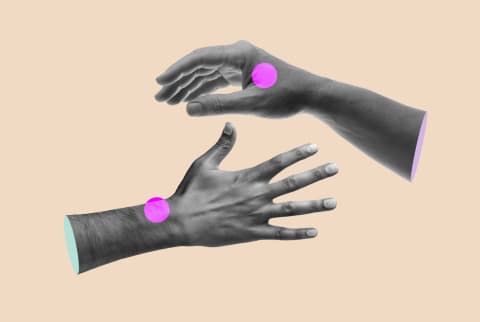
While there is a lot we still don't know about COVID-19, it does seem to be spread by respiratory droplets and cause symptoms in the upper and/or lower respiratory. This means that one of the best ways we can protect ourselves from the virus (in addition to practicing social distancing and wearing a mask) is to take care of our lung health and immunity.
What we can learn about lung health and immunity from traditional Chinese medicine.
According to traditional Chinese medicine (TCM) theory, the acupoints are plotted along each meridian and used to treat various conditions and imbalances via the practice of acupuncture. The lung meridian is one of the major 12 meridian pathways in the human body, responsible not only for the lungs, but also the immune system, and the emotion of grief.
In TCM, the lungs govern chi (our life force), which is crucial for all metabolic activities. Therefore, lung health determines our overall well-being. By strengthening the lung meridian, we speed up blood and chi circulation throughout the body, increasing immune cell activities1 necessary to support immune health.
Energetically speaking, the lung meridian takes in the new, gets rid of the old, and relates to our ability to process grief. This year, grief has become an increasingly common experience in our society. Now is the time to strengthen our ability to cope with collective trauma and transform.
A quick acupressure routine to help support the lungs.
Acupressure is a convenient, simple, and safe practice you can do at home. It uses some of the same acupoints and meridians as acupuncture, but instead of using needles, you simply apply pressure to these points with your hands.
How to do it:
- Apply gentle pressure to the points bilaterally for 1 to 2 minutes at a time on a daily basis. You can apply pressure with your fingertips or an acupressure tool.
- I like to hold down the point for 4 breaths, then release for 1 breath, and repeat. This ensures that you do not leave a bruise on the point afterward. The applied pressure should produce slight tenderness to the points.
- While stimulating these points, take long and full breaths to slow down your breathing. Deep and slow breathing is a great tool to jump-start your vagus nerve, stimulating the parasympathetic nervous system and deepening relaxation.
Where to do it.
Here are a couple of points to start with—all of which help the lungs in some shape or form.
Lung 1
This point helps in the process of letting go. It's thought to disperse energy, help to release emotions, and expand lung capacity to deliver more oxygen around the body.
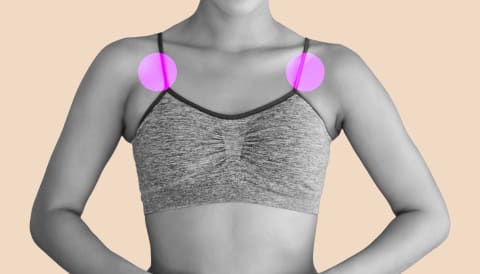
Location: Cross your arms as if you're giving yourself a hug. Wrap your fingers around the upper arms and your thumbs will naturally land in the hollow space under the clavicle, and above the armpit crease. The point is located on the lateral edge of the chest, between the first and second rib (sometimes level with the second rib). This area should feel tender to the touch.
Lung 7
This point opens up the lungs, frees up chi, and strengthens our body's defensive energy. This is also a great point to release emotions of grief. As this point links the lung and the large intestine meridians, it can also work to move the bowels.
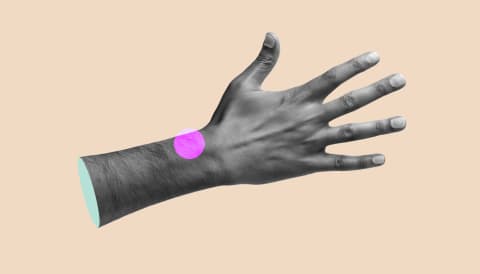
Location: Intersect your index fingers and thumbs of both hands. Let the index finger of one hand land on top of the radial styloid process. The point is located under the tip of the index finger.
Large Intestine 4
In meridian theory, the large Intestines and the lung meridian are closely related. Large intestine 4 is a master point for easing pain in the body, especially pain in the head and face, and supporting immunity. Be mindful not to stimulate this point during pregnancy.
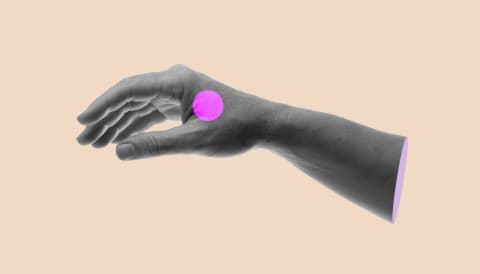
Location: Stretch out your hand facedown. There should be a "V" that forms between the web of the thumb and index finger. This point is approximately in the center of the web; palpate for the most tender spot.
Liver 3
The liver meridian is closely associated with negative emotions like anxiety, anger, and stress. Psychological stress can often stimulate stress response in the body, and as a result, lower our immune defense. So it is no surprise that when we stimulate the liver, it can benefit our immune system too.
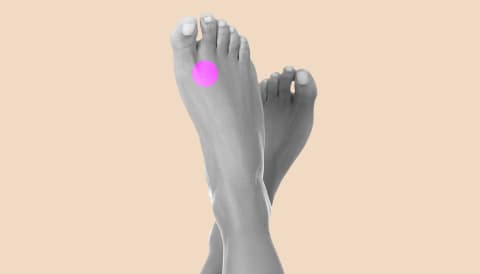
Location: This point is located on the top of your foot, between the web of the big and the second toe. Slide your index finger up the web; the point is in the depression just before the junction of the two metatarsal bones.
Other ways to support the lung meridian:
Eat spicy foods.
The lung meridian corresponds to pungent (or spicy) taste in five-element theory. By increasing the intake of such foods, we support lung health and nourish overall chi and blood circulation. Some examples are ginger, mint, scallion, daikon radish, garlic, pear, leeks, and rice. You will probably also notice these "lung tonic" foods are mostly white in color, an easier way to help you identify them.
Do meridian stretches and yoga.
Yoga and meridian theory are interconnected. Many yoga poses are, in fact, also stretching the meridian pathways. Doing them regularly can improve circulation and remove blockages in the meridians. From beginner yoga poses like upward-facing dog and fish pose to the more advanced camel pose or cow face pose, these can effectively stretch the lung meridian pathway. For example, fish pose expands the rib cage and widens the bronchial tubes, which opens the lungs to enhance deeper respiration, allowing for more oxygen to enter. When you are in each of these poses, slow down breathing and take in deep breaths to fill up the lungs.
While these lung-supporting practices alone aren't enough to protect you from contracting COVID-19, they're great tools to have in your tool belt.
Watch Next
Enjoy some of our favorite clips from classes
Enjoy some of our favorite clips from classes
What Is Meditation?
Mindfulness/Spirituality | Light Watkins
Box Breathing
Mindfulness/Spirituality | Gwen Dittmar
What Breathwork Can Address
Mindfulness/Spirituality | Gwen Dittmar
The 8 Limbs of Yoga - What is Asana?
Yoga | Caley Alyssa
Two Standing Postures to Open Up Tight Hips
Yoga | Caley Alyssa
How Plants Can Optimize Athletic Performance
Nutrition | Rich Roll
What to Eat Before a Workout
Nutrition | Rich Roll
How Ayurveda Helps Us Navigate Modern Life
Nutrition | Sahara Rose
Messages About Love & Relationships
Love & Relationships | Esther Perel
Love Languages
Love & Relationships | Esther Perel
What Is Meditation?
Box Breathing
What Breathwork Can Address
The 8 Limbs of Yoga - What is Asana?
Two Standing Postures to Open Up Tight Hips
How Plants Can Optimize Athletic Performance
What to Eat Before a Workout
How Ayurveda Helps Us Navigate Modern Life
Messages About Love & Relationships
Love Languages
Advertisement

What Men Are Getting Wrong About Mental Health, From A Psychologist
Stephen B. Poulter, PhD

Your Grandma's Go-To Supplement Is Once Again Popular (For A Good Reason)
Molly Knudsen, M.S., RDN

What Men Are Getting Wrong About Mental Health, From A Psychologist
Stephen B. Poulter, PhD

Your Grandma's Go-To Supplement Is Once Again Popular (For A Good Reason)
Molly Knudsen, M.S., RDN













